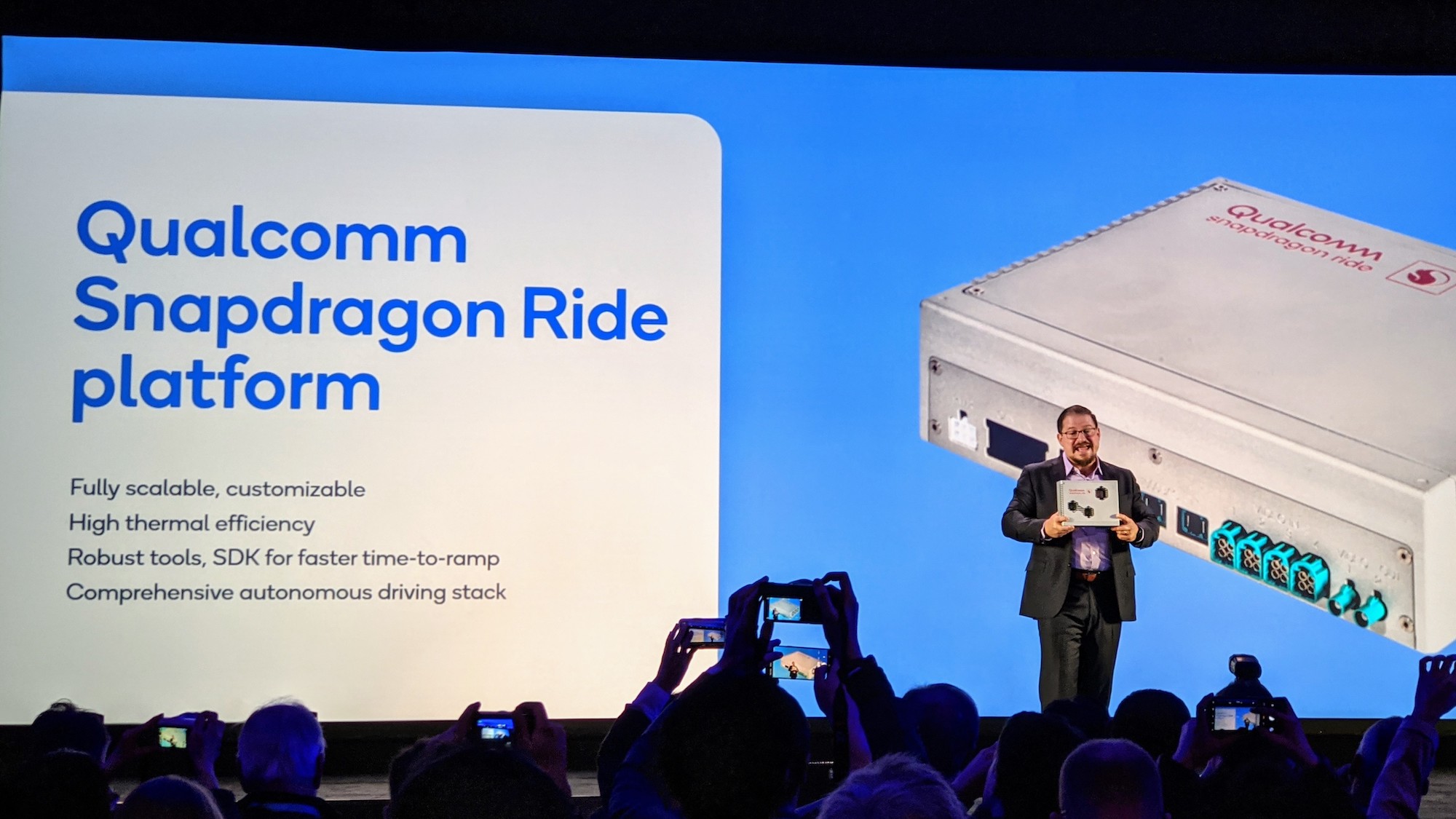Qualcomm Ride technology should bring us self-driving cars sooner

LAS VEGAS — Qualcomm silicon powers the bulk of the world's smartphones, and now the company is trying to do the same for assisted and self-driving cars.
Today (Jan. 6) at CES 2020, the chipmaker unveiled its Snapdragon Ride platform — a singular package comprised of multiple processors and an autonomous driving accelerator. Ride is built to handle everything from the active safety features popular in today's cars to the more sophisticated challenges of true Level 4 or Level 5 autonomy, which is still years away.
The beauty of the Ride platform lies in its flexibility. Rather than relying on a computer that consumes an entire trunk's worth of space and generates enough heat to necessitate liquid cooling, Ride is extremely compact and operates comfortably with only fans as cooling. That means it can be implemented in a variety of vehicles, no matter the shape or size.
What's more, because Ride was designed for both advanced driver-assisted systems as well as autonomous driving systems, the platform can scale with automakers' needs as the industry continues to change.
That's important, because while Qualcomm is seeding Ride to manufacturers in the first half of this year, the company says that cars with the kit in tow won't hit the road for another three years.
Sure, 2023 feels like a long way away, but the progression toward self-driving is a slow one, dependent on variables ranging from regulation to infrastructure. Qualcomm's bet is that Ride will be useful to vehicles today, but will also still be relevant in three years' time.
It's a goal worth working toward because cars take so long to develop, and the breadth of vehicles on the road means that tailoring a chipset to each one individually would stall deployment of the technology.
Get instant access to breaking news, the hottest reviews, great deals and helpful tips.
"We are not building an [engine control unit] for every tier; we are building a solution that can scale," Anshuman Saxena, Qualcomm's director of product management for autonomous driving systems, told Tom's Guide. "You as a carmaker, out of the big box that we're giving you, can use what you need."
Qualcomm has been testing the Ride platform on public roads for two-and-a-half years now, and for far longer off roads. While it will be a good while before we see the fruit of that labor, Ride's existence should at least help bring the self-driving future to us faster.
Be sure to check out our CES 2020 hub for the latest news and hands-on impressions out of Las Vegas.
Adam Ismail is a staff writer at Jalopnik and previously worked on Tom's Guide covering smartphones, car tech and gaming. His love for all things mobile began with the original Motorola Droid; since then he’s owned a variety of Android and iOS-powered handsets, refusing to stay loyal to one platform. His work has also appeared on Digital Trends and GTPlanet. When he’s not fiddling with the latest devices, he’s at an indie pop show, recording a podcast or playing Sega Dreamcast.
